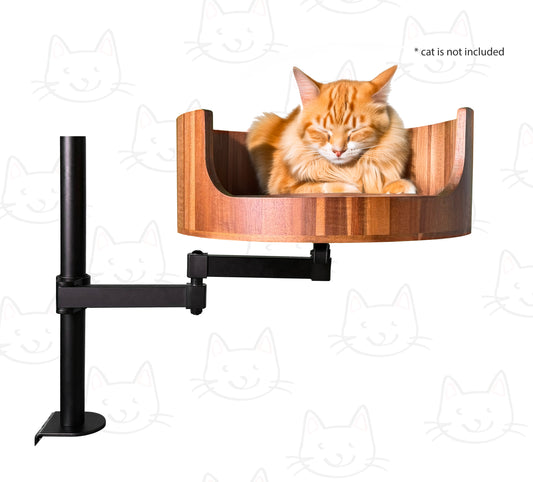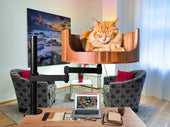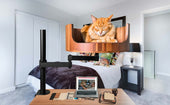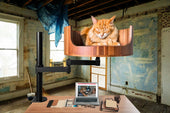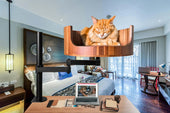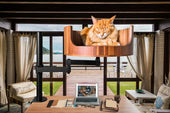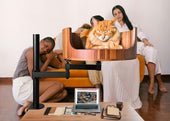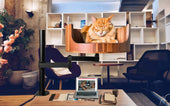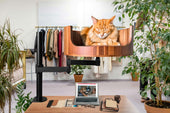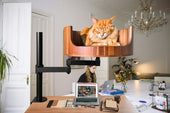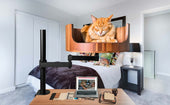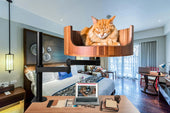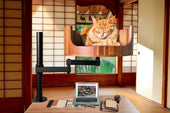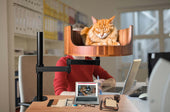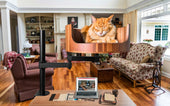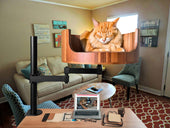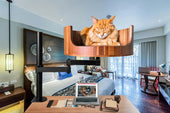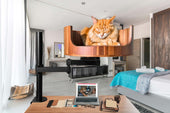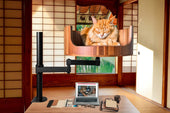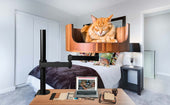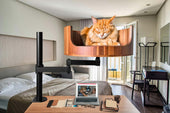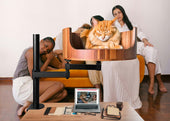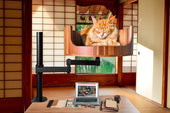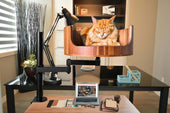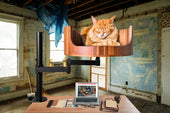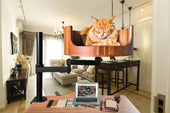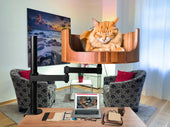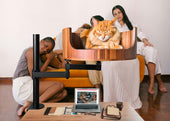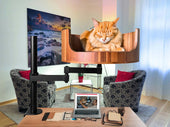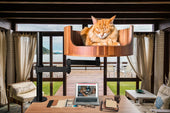
Cats Tail Flicking: Understanding Feline Body Language
Share
Desk Cat Nest, a popular online resource for cat owners, aims to provide valuable information about feline behavior and communication. In this article, we will delve into the intricate world of cats' body language, specifically focusing on the meaning behind tail flicking. Cats are known for their unique ways of expressing themselves, and their tails play a crucial role in conveying their emotions and intentions. By understanding what different tail movements signify, cat owners can develop a deeper connection with their beloved pets and ensure a harmonious relationship.
Throughout this article, we will explore the various reasons why cats flick their tails, ranging from playful behavior to signs of aggression or fear. We will discuss the significance of tail position, speed of flicking, and accompanying body language to decipher what message a cat is trying to communicate. Additionally, we will provide practical tips on how to interpret and respond to different tail flicking behaviors, helping cat owners enhance their bond with their furry companions. By shedding light on this common yet often misunderstood aspect of feline body language, we aim to empower cat owners to become more attuned to their cats' needs and emotions.
1. Tail flicking in cats can indicate a range of emotions, from excitement to irritation.
2. It is important to consider the context of the tail flicking behavior to accurately interpret a cat's feelings.
3. Slow, subtle tail flicks may signal contentment, while rapid flicks or thrashing can indicate stress or aggression.
4. Understanding feline body language, including tail flicking, can improve communication and strengthen the bond between cats and their owners.
5. Observing other body language cues, such as ear position and vocalizations, can provide additional insights into a cat's mood and intentions.
Types of Tail Flicking
There are several different types of tail flicking that cats exhibit, each with its own meaning. One common type is rapid tail flicking, which can indicate that a cat is feeling agitated or stressed. Slow, deliberate tail flicking, on the other hand, may signify that a cat is feeling focused or engaged. Puffed-up tail flicking is often a sign of aggression, while tail flicking with a curved back can indicate fear or submission. Understanding these different types of tail flicking can help you interpret your cat's body language more effectively.
Communication and Emotions
Tail flicking is just one way that cats communicate their emotions to those around them. By paying attention to your cat's tail flicking behavior, you can gain insight into how they are feeling in a given moment. For example, if your cat is playfully flicking their tail while chasing a toy, they are likely feeling excited and energized. On the other hand, if your cat is flicking their tail while being petted, they may be indicating that they are feeling overstimulated and would like the interaction to stop. By understanding the connection between tail flicking and emotions, you can better respond to your cat's needs.
Signs of Stress or Discomfort
In some cases, tail flicking may be a sign that your cat is experiencing stress or discomfort. If your cat's tail flicking is accompanied by other signs of anxiety, such as dilated pupils, flattened ears, or a hunched posture, it may be time to assess their environment and make adjustments to help them feel more at ease. Providing your cat with a quiet, comfortable space to retreat to when they are feeling overwhelmed, as well as opportunities for mental and physical stimulation, can help reduce their stress levels and prevent excessive tail flicking behavior. If you are concerned about your cat's well-being, it is always a good idea to consult with a veterinarian or animal behaviorist for further guidance.
Desk Cat Nest FAQ
Why is my cat constantly flicking its tail?
Cats flick their tails as a form of communication. It can indicate excitement, agitation, or stress. Providing a comfortable and secure space like the Desk Cat Nest can help reduce tail flicking behavior.
Can the Desk Cat Nest help reduce my cat's tail flicking?
Yes, the Desk Cat Nest provides a cozy and safe haven for your cat, allowing them to feel more relaxed and secure. This can help reduce stress and potentially decrease tail flicking behavior.
How should I introduce my cat to the Desk Cat Nest?
Place the Desk Cat Nest in a quiet and familiar location for your cat. Add some of their favorite toys or treats inside to entice them to explore and use the nest. Allow your cat to approach the nest at their own pace.
Is the Desk Cat Nest easy to clean?
Yes, the Desk Cat Nest is made with durable and easy-to-clean materials. You can spot clean any messes or hair with a damp cloth and mild detergent. The cushion inside is also removable for washing.
In conclusion, the Desk Cat Bed is a valuable choice for cats experiencing tail flicking due to its comfortable and cozy design. By providing a safe and secure space for your cat to relax and unwind, the Desk Cat Bed can help reduce stress and anxiety levels, ultimately leading to a decrease in tail flicking behavior. With its soft cushioning and sturdy construction, this product offers both comfort and support for your feline companion. Investing in a Desk Cat Bed is not only beneficial for your cat's well-being but also for your peace of mind knowing that you are providing them with a high-quality and effective solution for their tail flicking issues.

